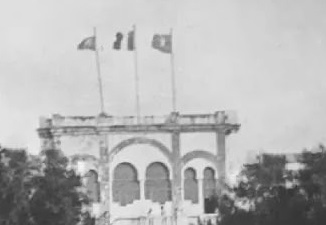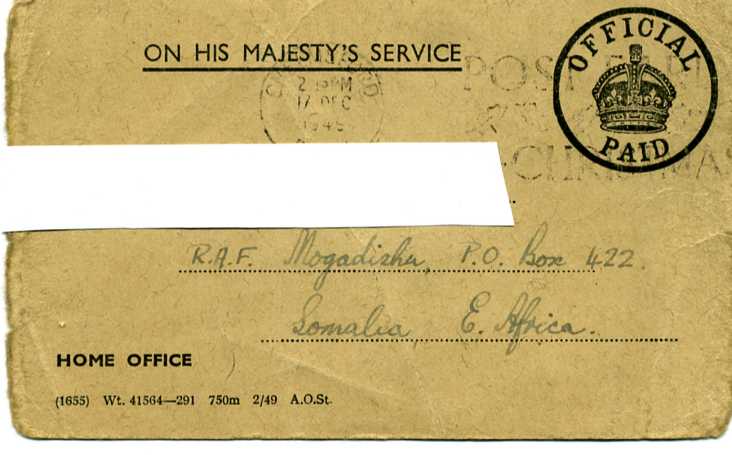|
Mogadiscio
Mogadishu (, also ; so, Muqdisho or ; ar, مقديشو ; it, Mogadiscio ), locally known as Xamar or Hamar, is the capital and List of cities in Somalia by population, most populous city of Somalia. The city has served as an important port connecting traders across the Indian Ocean for millennia, and has an estimated population of 2,388,000 (2021). Mogadishu is located in the coastal Banadir region on the Indian Ocean, which unlike other Somali regions, is considered a municipality rather than a (federal state). Mogadishu has a long history, which ranges from the Ancient history, ancient period up until the present, serving as the capital of the Sultanate of Mogadishu in the 9th-13th century, which for many centuries controlled the Indian Ocean gold trade, and eventually came under the Ajuran Empire in the 13th century which was an important player in the medieval Silk Road maritime trade. Mogadishu enjoyed the height of its prosperity during the 14th and 15th centuries a ... [...More Info...] [...Related Items...] OR: [Wikipedia] [Google] [Baidu] |
Italian Somaliland
Italian Somalia ( it, Somalia Italiana; ar, الصومال الإيطالي, Al-Sumal Al-Italiy; so, Dhulka Talyaaniga ee Soomaalida), was a protectorate and later colony of the Kingdom of Italy in present-day Somalia. Ruled in the 19th century by the Somali Sultanates of Hobyo and Majeerteen in the north, and the Hiraab Imamate and Geledi Sultanate and the Biimaal Sultanate leading a resistance against the colonials in southern Somalia for decades. The territory was acquired in the 1880s by Italy through various treaties.Mariam Arif Gassem, ''Somalia: clan vs. nation'' (s.n.: 2002), p.4 In 1936, the region was integrated into Italian East Africa as the Somalia Governorate. This would last until Italy's loss of the region in 1941, during the East African campaign of World War II. Italian Somalia then came under British military administration until 1950, when it became a United Nations trusteeship, the Trust Territory of Somalia under Italian administration. On 1 July 196 ... [...More Info...] [...Related Items...] OR: [Wikipedia] [Google] [Baidu] |
Administrative Divisions Of Somalia
Somalia is officially divided into 18 administrative regions (''gobollo'', singular ''gobol'') . These are in turn subdivided into seventy-two districts (plural ''degmooyin''; singular ''degmo'') On a ''de facto'' basis, northern Somalia is now divided up among the autonomous region of Puntland (which considers itself an autonomous state) and Somaliland (a self-declared but unrecognized sovereign state). In central Somalia, Galmudug is another regional entity that emerged south of Puntland. For these civil war divisions, see '' States and regions of Somalia''. Regions and districts Historical divisions Pre-independence In 1931, Italian Somaliland consisted of seven commissariats."Regions of Somalia" ''Statoids''. Retrieved 20 February 2011. * Alto Giuba * Alto Uebi-Scebeli * Basso Giuba * Basso Uebi-Scebeli * Migiurtinia * Mogadi ... [...More Info...] [...Related Items...] OR: [Wikipedia] [Google] [Baidu] |
Somalia
Somalia, , Osmanya script: 𐒈𐒝𐒑𐒛𐒐𐒘𐒕𐒖; ar, الصومال, aṣ-Ṣūmāl officially the Federal Republic of SomaliaThe ''Federal Republic of Somalia'' is the country's name per Article 1 of thProvisional Constitution, (; ), is a country in the Horn of Africa. The country is bordered by Ethiopia to the west, Djibouti to the northwest, the Gulf of Aden to the north, the Indian Ocean to the east, and Kenya to the southwest. Somalia has the longest coastline on Africa's mainland. Its terrain consists mainly of plateaus, plains, and highlands. Hot conditions prevail year-round, with periodic monsoon winds and irregular rainfall. Somalia has an estimated population of around million, of which over 2 million live in the capital and largest city Mogadishu, and has been described as Africa's most culturally homogeneous country. Around 85% of its residents are ethnic Somalis, who have historically inhabited the country's north. Ethnic minorities are ... [...More Info...] [...Related Items...] OR: [Wikipedia] [Google] [Baidu] |
Hiraab Imamate
The Hiraab Imamate ( so, Saldanadda Hiraab) also known as the Yacquubi Dynasty was a Somali kingdom that ruled parts of the Horn of Africa during the late 17th century and 19th century until it was incorporated into Italian Somaliland. The Imamate was governed by the Yacquub Dynasty. It was founded by Imam Omar who successfully rebelled and defeated the Ajuran and established an independent kingdom. History Establishment The Hiraab Imamate was the successor state of the Ajuran Sultanate. The reason for their rebellion was the Ajuran rulers, in the end, became extremely prideful, neglected the sharia, and imposed a heavy taxation on their subjects which was the main reason for the rebellion. The first clan(qabbil) to ever challenge the Ajuuraan rulers was the Darandoolle clan a section of Hiraab. ''The Ajuuraan had decreed: “At the wells in our territory, the people known as Darandoolle and the other Hiraab cannot water their herds by day, but only at night.” … Then all ... [...More Info...] [...Related Items...] OR: [Wikipedia] [Google] [Baidu] |
Trust Territory Of Somaliland
The Trust Territory of Somaliland, officially the "Trust Territory of Somaliland under Italian administration" ( it, Amministrazione fiduciaria italiana della Somalia), was a United Nations Trust Territory situated in present-day Somalia. Its capital was Mogadishu and was administered by Italy from 1950 to 1960, following the dissolution of the former British Military Administration. It gained independence in 1960. Background In 1941, Italian Somaliland was occupied by British and South African troops as part of the East African Campaign of World War II. The British continued to administer the area until 1 April 1950. On that date, Italian Somaliland was made a Trust Territory, as stipulated by United Nations General Assembly Resolution 289 of 21 November 1949. This was the only case of a trusteeship being assigned to a defeated Second World War power. Indro Montanelli, a defender of Italian colonial rule, wrote in the late 1990s (when Somalia was devastated by civil war) tha ... [...More Info...] [...Related Items...] OR: [Wikipedia] [Google] [Baidu] |
Central Intelligence Agency
The Central Intelligence Agency (CIA ), known informally as the Agency and historically as the Company, is a civilian foreign intelligence service of the federal government of the United States, officially tasked with gathering, processing, and analyzing national security information from around the world, primarily through the use of human intelligence (HUMINT) and performing covert actions. As a principal member of the United States Intelligence Community (IC), the CIA reports to the Director of National Intelligence and is primarily focused on providing intelligence for the President and Cabinet of the United States. President Harry S. Truman had created the Central Intelligence Group under the direction of a Director of Central Intelligence by presidential directive on January 22, 1946, and this group was transformed into the Central Intelligence Agency by implementation of the National Security Act of 1947. Unlike the Federal Bureau of Investigation (FBI), which is a ... [...More Info...] [...Related Items...] OR: [Wikipedia] [Google] [Baidu] |
British Military Administration (Somali)
The British Military Administration of Somalia (; BMAS) was the control of the regions of British Somaliland and of the former Italian Somaliland by the British from 1941 until 1949. At the end of 1949, it became a United Nations trust territory which would last from 1950 until 1960 whilst under Italian administration. Overview During the Second World War, Britain occupied Italian Somaliland and militarily administered the territory as well as British Somaliland. Faced with growing Italian political pressure inimical to continued British tenure and Somali aspirations for independence, the Somalis and the British came to see each other as allies. The first modern Somali political party, the Somali Youth Club (SYC), was subsequently established in Mogadishu in 1943; it was later renamed the Somali Youth League (SYL).I. M. Lewis, ''A pastoral democracy: a study of pastoralism and politics among the Northern Somali of the Horn of Africa'', (LIT Verlag Münster: 1999), p.304. The SYL ... [...More Info...] [...Related Items...] OR: [Wikipedia] [Google] [Baidu] |
Geledi Sultanate
The Sultanate of the Geledi ( so, Saldanadda Geledi, ar, سلطنة غلدي) also known as the Gobroon Dynasty Somali Sultanate: The Geledi City-state Over 150 Years - Virginia Luling (2002) Page 229 was a Somali kingdom that ruled parts of the Horn of Africa during the late-17th century and 19th century. The Sultanate was governed by the Gobroon dynasty. It was established by the Geledi soldier Ibrahim Adeer, who had defeated various vassals of the Ajuran Sultanate and elevated the Gobroon to wield significant political power. Following Mahamud Ibrahim's consolidation, the dynasty reached its apex under Yusuf Mahamud Ibrahim, who successfully modernized the Geledi economy and eliminated regional threats with the Conquest of Bardera in 1843, and would go on to receive tribute from Said bin Sultan the ruler of the Omani Empire. Geledi Sultans had strong regional ties and built alliances with the Pate and Witu Sultanates on the Swahili coast. Trade and Geledi power would con ... [...More Info...] [...Related Items...] OR: [Wikipedia] [Google] [Baidu] |
Textile
Textile is an umbrella term that includes various fiber-based materials, including fibers, yarns, filaments, threads, different fabric types, etc. At first, the word "textiles" only referred to woven fabrics. However, weaving is not the only manufacturing method, and many other methods were later developed to form textile structures based on their intended use. Knitting and non-woven are other popular types of fabric manufacturing. In the contemporary world, textiles satisfy the material needs for versatile applications, from simple daily clothing to bulletproof jackets, spacesuits, and doctor's gowns. Textiles are divided into two groups: Domestic purposes onsumer textilesand technical textiles. In consumer textiles, aesthetics and comfort are the most important factors, but in technical textiles, functional properties are the priority. Geotextiles, industrial textiles, medical textiles, and many other areas are examples of technical textiles, whereas clothing and ... [...More Info...] [...Related Items...] OR: [Wikipedia] [Google] [Baidu] |
East Africa
East Africa, Eastern Africa, or East of Africa, is the eastern subregion of the African continent. In the United Nations Statistics Division scheme of geographic regions, 10-11-(16*) territories make up Eastern Africa: Due to the historical Omani Empire and colonial territories of the British East Africa Protectorate and German East Africa, the term ''East Africa'' is often (especially in the English language) used to specifically refer to the area now comprising the three countries of Kenya, Tanzania, and Uganda. However, this has never been the convention in many other languages, where the term generally had a wider, strictly geographic context and therefore typically included Djibouti, Eritrea, Ethiopia, and Somalia.Somaliland is not included in the United Nations geoscheme, as it is internationally recognized as a part of Somalia. *Tanzania, Kenya, Uganda, Rwanda, Burundi, Democratic Republic of Congo and South Sudan are members of the East African Community. The firs ... [...More Info...] [...Related Items...] OR: [Wikipedia] [Google] [Baidu] |
Silk Road
The Silk Road () was a network of Eurasian trade routes active from the second century BCE until the mid-15th century. Spanning over 6,400 kilometers (4,000 miles), it played a central role in facilitating economic, cultural, political, and religious interactions between the Eastern world, East and Western world, West. The name "Silk Road", first coined in the late 19th century, has fallen into disuse among some modern historians in favor of Silk Routes, on the grounds that it more accurately describes the intricate web of land and sea routes connecting East Asia, East and Southeast Asia, the South Asia, Indian subcontinent, Central Asia, the Middle East, East Africa and Southern Europe, Europe. The Silk Road derives its name from the highly lucrative trade of silk, silk textiles that were Silk industry in China, produced almost exclusively in China. The network began with the Han dynasty, Han dynasty's expansion into Central Asia around 114 BCE, Protectorate of the Western Regio ... [...More Info...] [...Related Items...] OR: [Wikipedia] [Google] [Baidu] |









